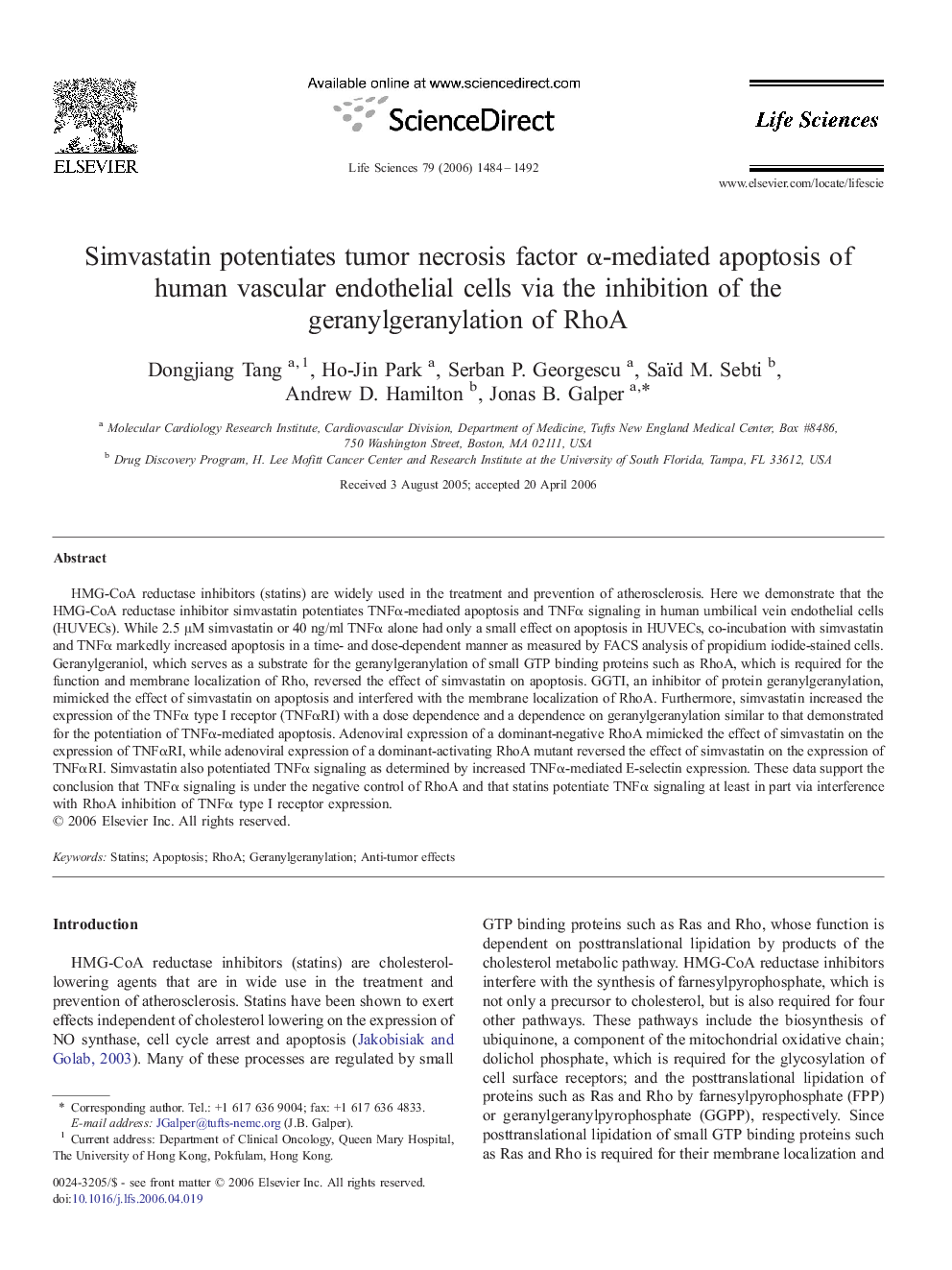| Article ID | Journal | Published Year | Pages | File Type |
|---|---|---|---|---|
| 2554254 | Life Sciences | 2006 | 9 Pages |
Abstract
HMG-CoA reductase inhibitors (statins) are widely used in the treatment and prevention of atherosclerosis. Here we demonstrate that the HMG-CoA reductase inhibitor simvastatin potentiates TNFα-mediated apoptosis and TNFα signaling in human umbilical vein endothelial cells (HUVECs). While 2.5 μM simvastatin or 40 ng/ml TNFα alone had only a small effect on apoptosis in HUVECs, co-incubation with simvastatin and TNFα markedly increased apoptosis in a time- and dose-dependent manner as measured by FACS analysis of propidium iodide-stained cells. Geranylgeraniol, which serves as a substrate for the geranylgeranylation of small GTP binding proteins such as RhoA, which is required for the function and membrane localization of Rho, reversed the effect of simvastatin on apoptosis. GGTI, an inhibitor of protein geranylgeranylation, mimicked the effect of simvastatin on apoptosis and interfered with the membrane localization of RhoA. Furthermore, simvastatin increased the expression of the TNFα type I receptor (TNFαRI) with a dose dependence and a dependence on geranylgeranylation similar to that demonstrated for the potentiation of TNFα-mediated apoptosis. Adenoviral expression of a dominant-negative RhoA mimicked the effect of simvastatin on the expression of TNFαRI, while adenoviral expression of a dominant-activating RhoA mutant reversed the effect of simvastatin on the expression of TNFαRI. Simvastatin also potentiated TNFα signaling as determined by increased TNFα-mediated E-selectin expression. These data support the conclusion that TNFα signaling is under the negative control of RhoA and that statins potentiate TNFα signaling at least in part via interference with RhoA inhibition of TNFα type I receptor expression.
Related Topics
Health Sciences
Medicine and Dentistry
Cardiology and Cardiovascular Medicine
Authors
Dongjiang Tang, Ho-Jin Park, Serban P. Georgescu, Saïd M. Sebti, Andrew D. Hamilton, Jonas B. Galper,
